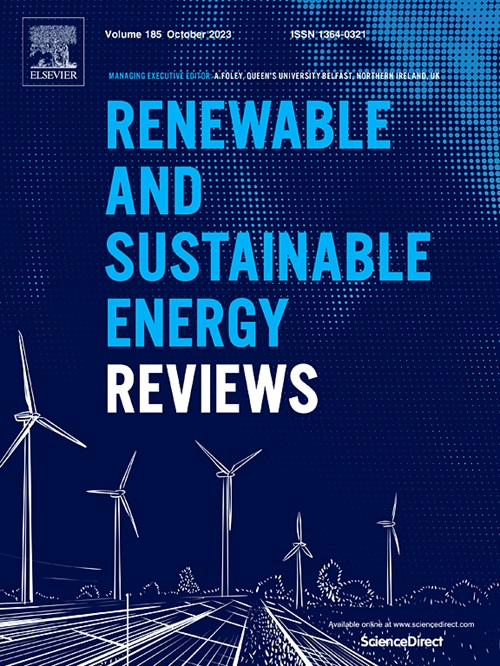Efficient energy harvesting using triboelectric nanogenerators (TENGs): Integration with technologies, wearable applications, and future trends
IF 16.3
1区 工程技术
Q1 ENERGY & FUELS
引用次数: 0
Abstract
The escalating energy demands and the urgent need for sustainable power solutions have highlighted the potential of triboelectric nanogenerators (TENGs) as viable energy harvesting technologies. This paper continues the comprehensive review by focusing on the integration of TENGs with other technologies, their applications in wearable devices, and emerging future trends. This review introduces the integration of TENGs with various technologies, emphasizing hybrid energy harvesting systems, such as TENG-photovoltaic hybrids, TENG-piezoelectric generator systems, and TENG-TEG systems. The paper also explores the application of TENGs in smart systems and internet of things (IoT) applications, including self-powered sensors, IoT connectivity, wearable devices, environmental monitoring, smart homes, and industrial IoT. These integrations demonstrate TENGs’ potential to enhance the efficiency and sustainability of modern technology. Significant attention is given to the advancements in wearable and flexible TENGs. This includes self-powered health monitoring, integration with smart clothing, biocompatible materials, and applications in rehabilitation and fitness tracking. The paper discusses the development of flexible and stretchable TENGs, highlighting innovations in stretchable polymers, serpentine interconnects, and encapsulation techniques, which expand the possibilities for wearable technology, soft robotics, and flexible electronics. Finally, the review addresses environmental and large-scale applications of TENGs, such as ocean wave and wind energy harvesting, and environmental monitoring and sensing systems. It also considers the future prospects and emerging trends, including the integration of TENGs with artificial intelligence and their application in next-generation technologies. By covering these areas, this paper underscores the transformative potential of TENGs in various domains, contributing to sustainable and efficient energy solutions for the future.
求助全文
约1分钟内获得全文
求助全文
来源期刊

Renewable and Sustainable Energy Reviews
工程技术-能源与燃料
CiteScore
31.20
自引率
5.70%
发文量
1055
审稿时长
62 days
期刊介绍:
The mission of Renewable and Sustainable Energy Reviews is to disseminate the most compelling and pertinent critical insights in renewable and sustainable energy, fostering collaboration among the research community, private sector, and policy and decision makers. The journal aims to exchange challenges, solutions, innovative concepts, and technologies, contributing to sustainable development, the transition to a low-carbon future, and the attainment of emissions targets outlined by the United Nations Framework Convention on Climate Change.
Renewable and Sustainable Energy Reviews publishes a diverse range of content, including review papers, original research, case studies, and analyses of new technologies, all featuring a substantial review component such as critique, comparison, or analysis. Introducing a distinctive paper type, Expert Insights, the journal presents commissioned mini-reviews authored by field leaders, addressing topics of significant interest. Case studies undergo consideration only if they showcase the work's applicability to other regions or contribute valuable insights to the broader field of renewable and sustainable energy. Notably, a bibliographic or literature review lacking critical analysis is deemed unsuitable for publication.
 求助内容:
求助内容: 应助结果提醒方式:
应助结果提醒方式:


